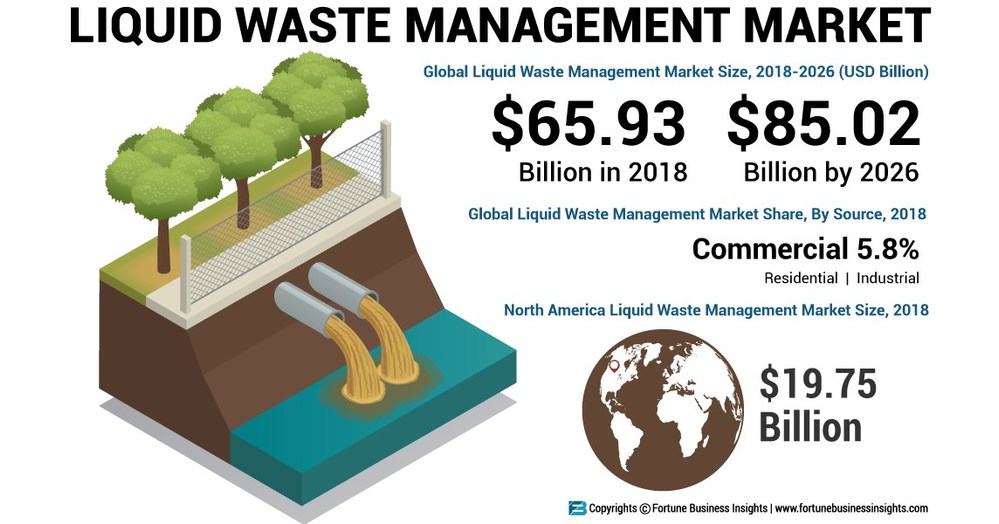Some Known Incorrect Statements About Reclaim Waste
Some Known Incorrect Statements About Reclaim Waste
Blog Article
Things about Reclaim Waste
Table of ContentsThe 30-Second Trick For Reclaim WasteWhat Does Reclaim Waste Mean?Some Known Incorrect Statements About Reclaim Waste Fascination About Reclaim WasteThe Definitive Guide for Reclaim Waste
Check out the kinds, events, and forms of fluid waste. Domestic sewage waste refers to the waste and products from a property septic container. This kind of waste is produced by humans in homes, institutions, and other structures. This only includes septic tanks that have a drain field. The appropriate monitoring and disposal of residential sewer waste require liquid waste to be transferred to a sewage therapy plant where the appropriate approaches and tools are put on cleanse and get rid of waste.
Commercial waste often consists of potential dangers, such as combustible materials or a blend of liquid and solid waste products, and needs an extra sophisticated and detailed disposal procedure. The disposal of industrial waste usually involves the filtration of waste before transport to guarantee safe and correct disposal. Hazardous waste is produced from results and overflow of industrial processes and production.
This sort of waste can not utilize the exact same sewage management transport or processes as septic or business fluids. The hazardous waste monitoring process requires the inspection and testing of fluid waste prior to it goes through the disposal procedure (liquid waste removal). Runoff waste is the liquid waste that comes from overflow and excess stormwater in highly booming locations or cities
Runoff waste can cause contamination and flooding otherwise dealt with properly. Discover more about sewer cleaning and waste monitoring. Guaranteeing appropriate waste administration can stop calamities and reduce ecological injury. Both people in property settings and specialists in business or manufacturing sectors can take advantage of recognizing the procedures and policies of liquid waste administration.
The 7-Second Trick For Reclaim Waste
Call PROS Solutions today to learn more about our waste administration and disposal solutions and the proper ways to care for the liquid waste you produce.
(https://www.easel.ly/browserEasel/14532007)This so-called 'wastewater' is not only a vital resource but, after therapy, will be released to our land, rivers or the sea. Made use of water from commodes, showers, bathrooms, kitchen sinks, laundries and industrial procedures is understood as wastewater.

water used to cool down machinery or clean plant and devices). Stormwater, a kind of wastewater, is drainage that streams from farming and metropolitan areas such as roofings, parks, yards, roadways, paths and gutters right into stormwater drains, after rain. Stormwater streams neglected straight to local creeks or rivers, at some point reaching the ocean.
Facts About Reclaim Waste Revealed
In Queensland, a lot of wastewater is treated at sewage treatment plants. Wastewater is carried from domestic or commercial websites through a system of sewage systems and pump terminals, recognized as sewerage reticulation, to a sewage therapy plant.
The Division of Natural Resources encourages city governments regarding handling, operating and preserving sewerage systems and therapy plants. In unsewered locations, city governments might call for owners to mount specific or home sewage treatment systems to treat residential wastewater from commodes, kitchens, shower rooms and washings. The Division of Natural Resources authorizes the usage of household systems when they are proven to be effective.
A lot of stormwater gets no treatment. In some new class, therapy of some stormwater to remove clutter, sand and gravel has actually begun making use of gross pollutant catches. Wastewater therapy happens in four stages: Gets rid of strong issue. Larger solids, such as plastics and various other objects mistakenly discharged to drains, are gotten rid of when wastewater is passed through screens.
Wastewater then moves into big containers where solids resolve and are gotten rid of as sludge. Grease and residue are skimmed from the surface. Makes use of tiny living microorganisms you can check here understands as micro-organisms to damage down and eliminate remaining dissolved wastes and fine fragments. Micro-organisms and wastes are integrated in the sludge. Gets rid of nitrogen and phosphorus nutrients that can trigger algal flowers in our waterways and intimidate aquatic life.
Little Known Facts About Reclaim Waste.
Nutrient removal is not readily available at all sewage therapy plants due to the fact that it requires costly specialized equipment. Clear fluid effluent produced after therapy may still include disease-causing micro-organisms - liquid waste disposal.

This usually suggests wastewater has actually to be treated or impurities eliminated prior to it can be released to waterways. A lot of wastewater moves right into the sewage system. Under the Act, regional governments provide approvals and licences for eco pertinent tasks (ERAs) entailing wastewater releases that may have a regional effect. The division administers approvals and permits to ERAs including wastewater launches that might have a regional or statewide effect.
The 3-Minute Rule for Reclaim Waste
Tracking offers accurate details about water top quality and can validate that permit conditions are being fulfilled. The info obtained through surveillance gives the basis for making water top quality decisions.
Report this page